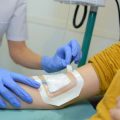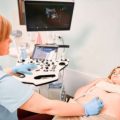Understanding Postpartum Body Changes
After welcoming a new life into the world, British mothers often find themselves navigating a myriad of physical changes. These shifts, ranging from abdominal muscle separation to changes in skin elasticity and persistent fat deposits, are perfectly natural but can sometimes feel overwhelming. In the UK, conversations about postnatal bodies have evolved, with more emphasis on embracing recovery and self-compassion. However, societal expectations and media portrayals still influence how many British women perceive their post-birth bodies.
Common postpartum changes include stretched abdominal muscles, looser skin around the stomach, and areas of stubborn fat that may not respond to traditional diet and exercise. Hormonal fluctuations can also lead to variations in weight distribution and skin texture. For many mothers, these changes are compounded by lifestyle adjustments—balancing childcare, work commitments, and personal well-being—making self-care both essential and challenging.
British culture encourages open dialogue about motherhood, but there is often an undercurrent of pressure to “bounce back” quickly. This expectation can impact self-esteem and body image. Fortunately, there is a growing movement across the UK that prioritises holistic health over rapid transformation, empowering mothers to make informed choices about body contouring options that align with their individual goals and lifestyles.
2. What Is Body Contouring? Options and Expectations
After welcoming a new life, many British mothers find their bodies have changed in ways that diet and exercise alone cannot address. Body contouring refers to a range of medical procedures designed to reshape and enhance the body’s appearance, helping mums regain confidence and comfort in their post-pregnancy bodies. Within the UK, both surgical and non-surgical body contouring techniques are available, each with its own benefits, limitations, and recovery profiles. Understanding these options—and setting realistic expectations—is essential for making informed decisions.
Surgical Body Contouring Techniques
Surgical procedures tend to offer more dramatic and longer-lasting results, but they also involve greater risks and longer recovery times. Common surgical options include:
| Procedure | Description | Typical Recovery Time |
|---|---|---|
| Abdominoplasty (Tummy Tuck) | Removes excess skin and fat from the abdomen; tightens abdominal muscles | 4–6 weeks |
| Liposuction | Sculpts targeted areas by removing stubborn fat deposits | 1–2 weeks |
| Breast Lift/Reduction | Restores breast shape or reduces size following pregnancy and breastfeeding changes | 2–4 weeks |
Considerations for Surgery
Surgical options typically require general anaesthesia and entail some downtime for recovery. It is vital to choose a GMC-registered consultant plastic surgeon with experience in postnatal body contouring. NHS coverage is rare except in cases of significant functional impairment.
Non-Surgical Body Contouring Techniques
For those seeking less invasive alternatives, several non-surgical treatments are available across reputable UK clinics:
| Treatment | Description | No. of Sessions Required |
|---|---|---|
| Cryolipolysis (Fat Freezing) | Targets and freezes fat cells, which are then naturally eliminated by the body | 2–4 sessions per area |
| Radiofrequency Skin Tightening | Uses heat energy to stimulate collagen production for firmer skin | 4–8 sessions recommended |
| Ultrasound Cavitation | Employs ultrasound waves to break down fat cells without surgery | 6–12 sessions needed for optimal results |
Expectations and Safety Standards in the UK
While non-surgical techniques can offer visible improvements with minimal downtime, outcomes are typically subtler than surgical results. All procedures should be performed by qualified practitioners registered with relevant UK regulatory bodies such as the Care Quality Commission (CQC) or Health and Care Professions Council (HCPC). Always consult with your GP or a certified aesthetic specialist before proceeding.
Setting Realistic Goals: What British Mothers Should Know
No body contouring procedure—surgical or otherwise—serves as a substitute for healthy lifestyle choices or guarantees perfection. Rather, these treatments aim to help you feel more at ease in your own skin after childbirth. During your consultation, discuss your medical history, desired outcomes, risks, and potential side effects so you can make an empowered decision tailored to your personal needs as a British mother.
![]()
3. Prioritising Safety: Choosing Qualified Practitioners
When considering body contouring treatments after childbirth, ensuring your safety is paramount. In Britain, it is crucial to select practitioners and clinics that uphold the highest standards of care. Begin by seeking out clinics regulated by the Care Quality Commission (CQC), the official body responsible for monitoring health and social care services in England. The CQC ensures that clinics meet rigorous safety, cleanliness, and patient care requirements.
Additionally, confirm that your chosen practitioner is registered with the General Medical Council (GMC) if they are a doctor, or with an appropriate professional regulatory body such as the Nursing and Midwifery Council (NMC) for nurses. These organisations ensure that medical professionals adhere to strict codes of practice and continue their professional development, which is essential for keeping up with the latest advancements in aesthetic medicine.
It’s wise to conduct thorough research before booking any procedures. Look for clinics with transparent patient reviews and established reputations within your local community. Many reputable British clinics will offer an initial consultation, during which you can ask about the practitioner’s qualifications, experience in postnatal body contouring, and evidence of previous results. Don’t hesitate to request proof of credentials or to check online registers provided by regulatory bodies.
Lastly, be cautious of practitioners offering unusually low prices or promising unrealistic outcomes. Safe and effective body contouring requires skill, experience, and adherence to proper protocols—all of which may be compromised in unregulated settings. By prioritising safety and choosing certified professionals regulated by trusted British authorities, you can confidently embark on your post-childbirth body contouring journey.
4. The Consultation: What to Discuss and Ask
The consultation is a crucial first step for any British mother considering body contouring after childbirth. A thorough discussion with your consultant will not only set realistic expectations but also ensure that you are fully informed about the process, risks, and your rights within the UK healthcare framework. Here’s how you can make the most out of your consultation.
Key Topics to Cover During Your Consultation
| Topic | Details to Discuss |
|---|---|
| Risks and Complications | Ask about possible side effects, rare complications, and how these are managed in both private and NHS settings. |
| Procedural Steps | Clarify the step-by-step process for your chosen treatment, including anaesthesia options and duration. |
| Recovery Expectations | Discuss typical downtime, need for post-op support at home, and when you can resume daily activities or work. |
| NHS vs Private Care Considerations | Inquire whether your case might be eligible for NHS referral or if private treatment is necessary; understand cost implications. |
| Follow-Up Care | Find out what aftercare is included, and if further appointments or treatments will be required. |
Essential Questions Unique to the British Context
- Is this procedure commonly performed in the UK? – Ensure that your chosen method aligns with UK safety standards and is approved by regulatory bodies such as the CQC (Care Quality Commission).
- Who will be performing my procedure? – Confirm that your surgeon is GMC-registered and has experience specifically with postnatal patients.
- What are my rights regarding complaints or second opinions? – Understand the process for raising concerns and accessing second opinions within British healthcare institutions.
- If complications arise, will I receive care through the NHS? – Clarify what safety nets exist should you require urgent intervention after a private procedure.
- How does consent work in this setting? – Familiarise yourself with the consent process specific to UK medical law, ensuring you have time to consider all information before agreeing to surgery.
The Importance of an Open Dialogue
A successful outcome starts with honest communication. Don’t hesitate to bring a list of questions or request written information. Most reputable clinics in Britain welcome proactive patients who wish to be thoroughly informed before proceeding. This approach not only empowers you but also ensures your postnatal body contouring journey is safe, effective, and tailored to your needs as a British mother.
5. Preparation and Aftercare: A British Perspective
For many British mums considering body contouring after childbirth, proper preparation and attentive aftercare are essential for achieving safe and satisfying results. Understanding how to navigate these phases within the unique context of the UK can make a significant difference in your experience and recovery.
Pre-Procedure Planning: Setting Realistic Expectations
Before embarking on any body contouring journey, it’s important to consult with a reputable, GMC-registered surgeon. Use your initial consultations to discuss your goals, medical history, and any concerns you may have. It’s wise to bring along a trusted friend or family member for support, as is customary in British healthcare settings. Make sure to clarify what outcomes are achievable and understand the risks involved, particularly if you’re balancing recovery with typical UK family life.
Preparing Your Home and Family Support Network
Preparation at home is equally vital. Arrange for help from your partner, extended family, or close friends during your recovery period—many British families rely on this collaborative approach. If you have young children, consider speaking with your local nursery or childminder about temporary care options. Stock up on healthy meals and ensure your living space is organised for easy movement post-surgery. The NHS website offers excellent resources on preparing for surgical procedures that can be tailored to cosmetic treatments.
Aftercare: Recovery with Practical UK Guidance
Post-operative care is crucial for a smooth recovery. Follow all medical advice given by your surgeon, including wound care and activity restrictions. The NHS can provide additional support for wound checks or general health queries, even though cosmetic procedures are typically conducted privately. Don’t hesitate to contact your GP if you notice any unusual symptoms; British GPs are familiar with supporting patients recovering from both private and NHS procedures.
Navigating Work and Family Commitments
Many British mothers return to work part-time or flexibly after childbirth. When planning surgery, coordinate time off with your employer—UK employment law provides protection during medical leave but be sure to communicate openly about your needs. Utilise statutory sick pay where applicable, and lean on family or community networks for school runs or household tasks as you heal.
Mental Wellbeing During Recovery
The emotional aspect of post-surgical recovery should not be overlooked. Access support groups online or locally through organisations such as Mumsnet or NCT (National Childbirth Trust). Open conversations about your experience can help normalise the journey for other mums while providing valuable reassurance during moments of doubt or frustration.
By combining professional guidance with the practical realities of UK family life and leveraging NHS resources where appropriate, British mothers can prepare effectively for body contouring procedures and optimise their path to recovery.
6. Balancing Maternity, Self-care and Wellbeing
Navigating the delicate balance between motherhood and self-care is a journey familiar to many British mothers. While the arrival of a child brings immense joy, it also introduces new challenges, with personal wellbeing often relegated to the background. In the context of postnatal body contouring, finding time for oneself can sometimes feel like an indulgence rather than a necessity. However, prioritising your own health and confidence is essential not only for you but also for your family’s overall wellbeing.
Understanding Societal Attitudes
Across the UK, societal expectations often portray mothers as selfless caretakers, occasionally leading to feelings of guilt when investing in personal needs or cosmetic procedures. Yet, there is a growing recognition that self-care is not selfish—it is vital. Taking steps towards feeling comfortable in your own skin can positively impact mental health and the ability to care for others. Open conversations about body image and self-esteem are helping to challenge outdated notions and foster a more supportive environment for mothers seeking body contouring solutions.
Accessing Support Networks
The British healthcare system and various community groups provide robust support networks for mothers navigating postnatal changes. From NHS midwives and health visitors to local NCT (National Childbirth Trust) groups and online forums, there are multiple avenues for advice and encouragement. These resources offer guidance on everything from nutrition and exercise to emotional wellbeing, helping you make informed decisions about postnatal recovery and cosmetic options.
Embracing Holistic Wellbeing
Ultimately, effective body contouring after childbirth should be viewed as part of a holistic approach to wellbeing—one that encompasses physical health, mental resilience, and social support. British mothers are increasingly empowered to seek treatments that align with their personal goals while maintaining their responsibilities at home. By leveraging available resources and fostering open dialogue within families and communities, you can achieve a harmonious balance between nurturing your child and caring for yourself.


